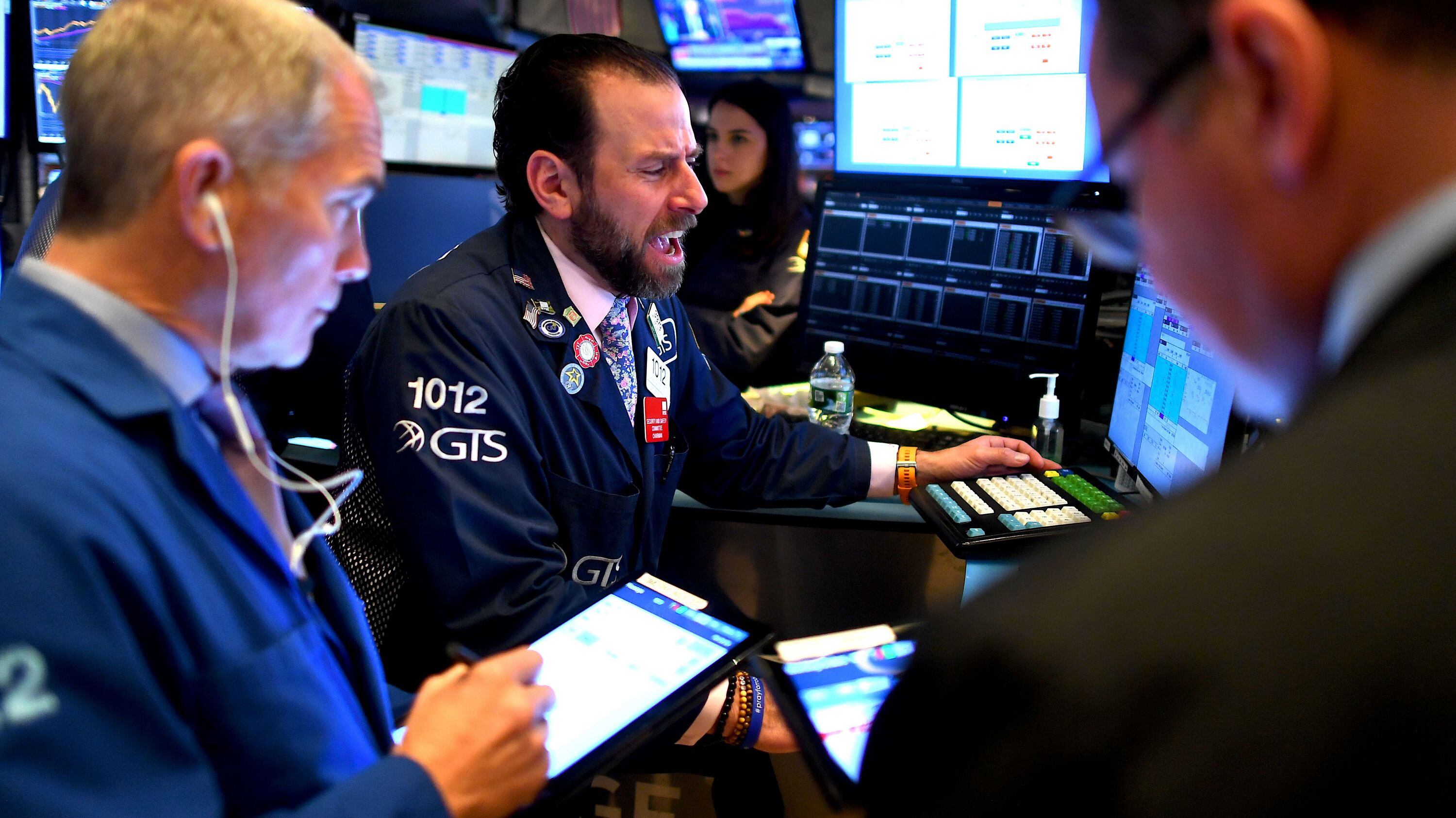By Stan Choe and Damian J. Troise
And back down goes the U.S. stock market.
The S&P 500 sank roughly 2 percent in midday trading Thursday, and Treasury yields fell toward more record lows as the market swung back to fear about the effects of a fast-spreading virus in its latest yo-yo move. Just a day earlier, stocks had soared, in part on hopes that more aggressive moves by governments and central banks around the world could help contain the economic fallout.
Get used to such vicious swings, which will likely keep going as long as the number of new infections continues to accelerate, many analysts and professional investors say. Just within Thursday's trading, the S&P 500 dropped as much as 2.9 percent in the morning before clawing back half the losses, only to fall lower again.
The growing understanding that the spread of infections — and the resulting damage to the economy — may not slow anytime soon is pulling sharply on markets. That pull has taken turns this week with the increasingly worldwide push that governments and central banks are trying to give markets through spending plans and interest-rate cuts.
In China, where the number of new infections has been slowing drastically, Shanghai-traded stocks have rallied nearly 12 percent since hitting a bottom on Feb. 3. They're just 1.6 percent away from wiping out the last of the losses they've sustained since the new virus began to spread late last year.
Factories in China are gradually reopening, and a return to a sense of normal life may even be on the horizon following swift and severe actions by the government to corral the virus.
But elsewhere in the world, the mood is much darker. There are about 17 times as many new infections outside China as in it, according to the World Health Organization. Widening outbreaks in South Korea, Italy and Iran are responsible for the majority of new infections.
In the U.S., the death toll climbed to 11 due to the virus. California declared a statewide emergency late Wednesday, joining Washington, Florida and Hawaii. Southwest Airlines warned its investors that it's seen a significant decline in demand in recent days and an increase in customers cancelling trips.
The S&P 500 was down 2.1 percent, as of 11:50 a.m. Eastern time. The Dow Jones Industrial Average fell 633 points, or 2.3 percent, to 26,457, and the Nasdaq was down 1.6 percent.
If the S&P 500 ends the day down at least 2 percent, it would be the fourth straight day the index has lurched that much in either direction, something that hasn't happened since 2011.
Losses were widespread, and all 11 sectors that make up the S&P 500 index were down. Financial stocks had the sharpest losses, at 3.4 percent. .
"The Western world is now following some of China's playbook, closing schools and declaring a state of emergency for example, but there is a sense that this is too little, too late," said Chris Beauchamp, chief market analyst at IG.
Travel-related companies continued to fall sharply on worries that frightened customers won't want to confine themselves in planes or boats with others. Royal Caribbean Cruises sank 13.1 percent, Carnival fell 10.5 percent and American Airlines Group lost 8.1 percent.
It's a sharp turnaround from earlier this year when the stock market pushed to new highs on the hopes that the virus may remain contained in China and be just a short-term challenge.
Now that a growing list of companies are warning about how the virus is hitting their sales and profits, investors are left with a lot of uncertainty about just how much economic growth and corporate profits will be affected.
"We could probably drive a metaphorical truck between the upside and downside cases here," said Jason Pride, chief investment officer for private wealth at Glenmede.
Asian stock markets started Thursday off higher, riding the wave of optimism and hope that sent the S&P 500 spurting up 4.2 percent on Wednesday. U.S. congressional leaders reached a deal on a bipartisan $8.3 billion spending bill to battle the coronavirus outbreak, and the Bank of Canada followed up on the Federal Reserve's surprise cut to interest rates the day before with its own.
Some economists expect the European Central Bank to make some kind of move before its meeting on March 12, and speculation is rising that the Swiss National Bank could follow shortly afterward. The Bank of England meets on March 26 on rates.
Health care stocks got a particularly big boost Wednesday after victories by Joe Biden in state primaries launched him into contender status for the Democratic presidential nomination with Bernie Sanders. Many investors see Sanders' health care plan as damaging to the industry's profits.
Japan's Nikkei 225 rose 1.1 percent, South Korea's Kospi gained 1.3 percent and stocks in Shanghai jumped 2 percent.
But markets turned lower as trading moved west to Europe. The French CAC 40 fell 1.9 percent, Germany's DAX lost 1.5 percent and the FTSE 100 in London dropped 1.6 percent.
Several measures of fear in the market clenched tighter.
The yield on the 10-year Treasury sank to 0.92 percent from 0.99 percent late Wednesday. Earlier this week was the first time ever that the 10-year yield dropped below 1 percent. Shorter-term Treasury yields fell as traders increase bets for more rate cuts by the Federal Reserve to try to limit the economic damage. The two-year Treasury yield fell to 0.57 percent from 0.62 percent.
Gold climbed as investors piled into investments seen as safe. It rose $18.10 to $1,661.10 per ounce.
Crude oil held relatively steady after OPEC members proposed a deep cut of production to shore up prices. Oil has been sliding on worries that a global economy weakened by the virus will burn less fuel.
Benchmark U.S. crude was flat at $46.78 per barrel. Brent crude, the international standard, slipped 14 cents to $50.99 per barrel.
___
AP Business Writer Yuri Kageyama contributed.









